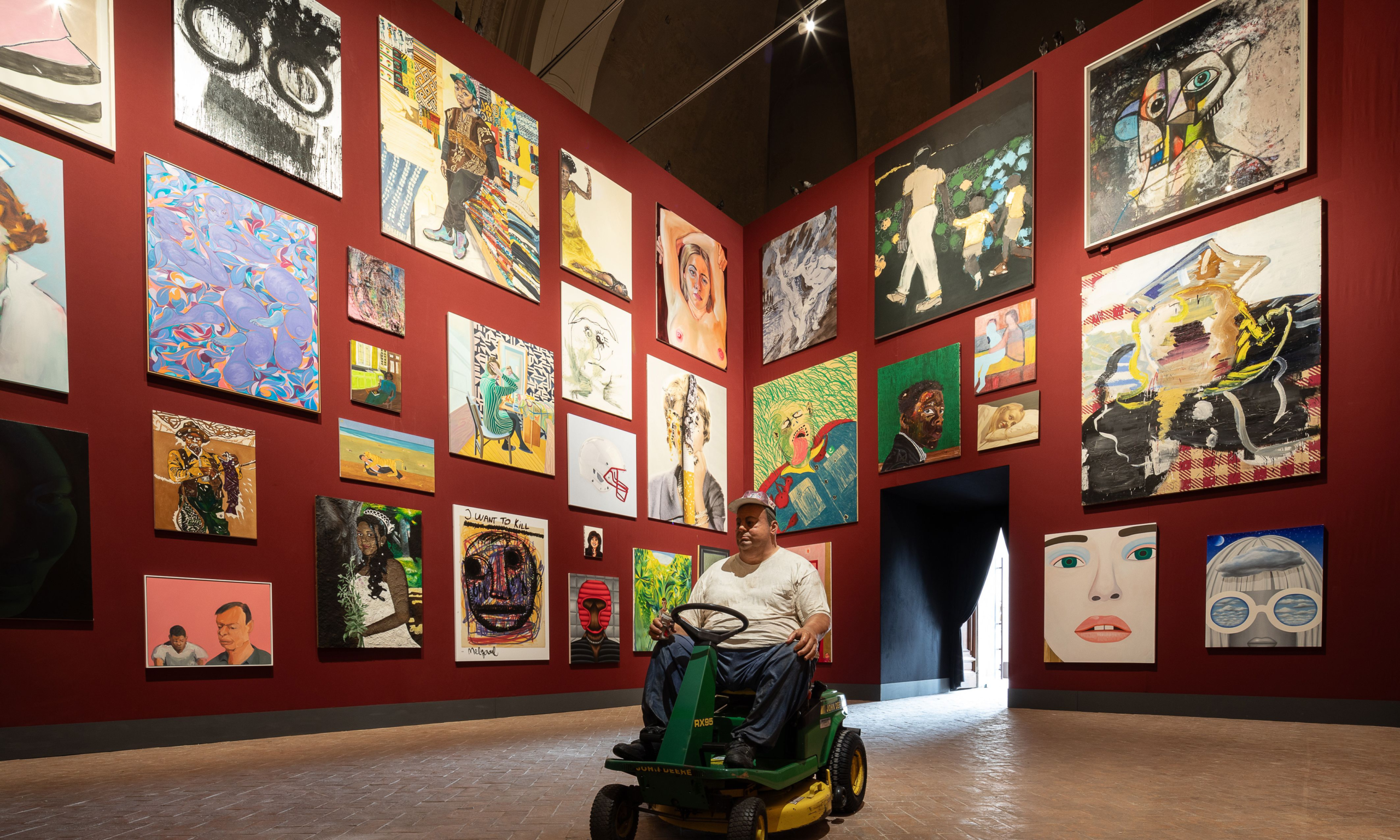The interior of Palazzo Barberini, displayed with contemporary American art from Tony Salamé's collection. Courtesy Gallerie Nazionali di Arte Antica
A new exhibition set in a Baroque palace in the heart of Rome aims to examine the role of Realism, figuration and truth in contemporary American art, all through work from the private collection of a Lebanese-Italian luxury retail magnate.
The name of the exhibition—Day for Night: New American Realism—is borrowed from a painting by Lorna Simpson included in the show, but is also the name for a film lighting technique that allows night scenes to be shot in broad daylight, for which the French term for the same technique is nuit Américaine, or American night. It is a fitting title for a show that tries to reveal that not all is as it seems in the US, or in the country’s art. The exhibit was curated by Massimiliano Gioni, the artist director at the New Museum and the curator of the 55th Venice Biennale in 2013, and Flaminia Gennari Santori, who until recently was the director of Rome’s National Galleries of Ancient Art, the museum partially housed inside Palazzo Barberini, the dramatic Baroque venue for the exhibit. The curators used more than 150 works from the collection of Tony and Elham Salamé.
Frank Bowling's painting Through Red (2013) flanked by a pair of Jacqueline Humphries's works on linen in Palazzo Barberini's Rococo apartment, among the only ones of its kind left in Rome. Courtesy Gallerie Nazionali di Arte Antica
Tony Salamé is the founder of Aïshti, the leading chain of luxury department stores in Lebanon. In 2015 he opened the Aïshti Foundation in Beirut that displays Salamé's personal art collection, which has a significant presence of American artists. The exhibition employs a sometimes-loose definition of “American”, featuring some artists like Cecily Brown, Sanya Kantarovsky, Salman Toor, Etel Adnan and Charline von Heyl, who were born in other countries but are based in the US or spent a significant amount of time there. Klara Lidén was born in Sweden and lives and works in Berlin, but a work of hers that incorporates a rubbish bin found in Milwaukee is one of the first pieces visitors see when they enter the exhibition.
“There's a resurgence of figuration in the work of many contemporary artists, and the question of Realism and truth in painting. It represents the reality of being in the background of a moment in history where notions of truth and reality are questioned in a sense from both the [political] left and the right,” Gioni says. “We have the denial of proof and evidence in the Trumpian field, but there is also a criticism—which obviously, it's much healthier, but not less complicated—of institutional authorities and notions of truth that are rejected. There has been an explosion of points of view, which is extremely healthy, but that has resulted in maybe a less simplified notion of truth as inoperative concepts in American politics and culture.”
As Day for Night winds through dozens of rooms on three floors of Palazzo Barberini—including one with a Rococo interior that has never before been open full-time to the public—the work on display interrogates some undeniable facets of contemporary American culture, like race and identity, protests, sex, violence, natural disasters and poverty. Gioni and Gennari Santori explored similar themes in a previous show using Salame’s collection at the Aïshti Foundation in Beirut called Dark Night. It served as a precursor to this show at the Palazzo Barberini, Gioni says, and many of the works included make a reappearance in Day for Night.
The backdrop of Palazzo Barberini may seem like an unlikely venue for a show dealing with contemporary American art and “post-truths”, but Gennari Santori pointed out during a press preview for the show that the Baroque era, during which the palazzo was built, and our current day and age had a lot in common. The 17th-century palace is among the earliest secular spaces to feature what we now know as Baroque architecture. Construction began just two years after Maffeo Barberini became Pope Urban VIII, and the palace was commissioned by the powerful family to be a spectacle as a means of propaganda and self-promotion.
“The dawn of the Baroque era is when a society of spectacle or the society of images explodes,” Gioni says. “The frescoes in the salon of Palazzo Barberini and the notion of spectacle, education and communication through images dates back to the Baroque. That kind of confluence between power and images is also very sadly pertinent to our times.”
• Day for Night: New American Realism, Gallerie Nazionali di Arte Antica – Palazzo Barberini, Rome, until 14 July 2024

